The report of the Vietnam Academy of Social Sciences on the results of the Oc Eo culture archaeology project, conducted by Associate Professor, Dr. Bui Minh Tri, shows extremely valuable discoveries and is full of interesting information.
Large-scale archaeological sites with long excavation periods
As a famous archaeological culture in the South, the Oc Eo-Ba The archaeological site and Nen Chua are associated with the history of the Kingdom of Phu Nam, a part of the history of the Vietnamese nation.
Associate Professor, Dr. Bui Van Liem, Editor-in-Chief of Archaeology Magazine, Member of the National Heritage Council:
The project has gathered the largest number of researchers, updated the most complete and comprehensive research documents, excavated with the largest total area, the largest scale, from the most advanced means and methods, discovered the largest volume of relics and artifacts, achieved the latest achievements in research on stratigraphy, role, function, age and nature of the Oc Eo-Ba The relic site...
The research results of the project provide a reliable scientific basis for planning, conservation and development of nomination dossiers for the UNESCO World Cultural Heritage list.
Since the end of the 19th century, French scholars have initially discovered traces of this culture, the most important of which was the archaeological excavation in 1944 conducted by Louis Malleret, in the Oc Eo field area, at the foot of Ba The mountain, Thoai Son district, An Giang . This is also the excavation that identified the name Oc Eo Culture.
Excavation results over many decades have shown the formation and development of the Oc Eo culture, thereby showing that Oc Eo-Ba The was a large, bustling and most famous urban center of the Kingdom of Funan.
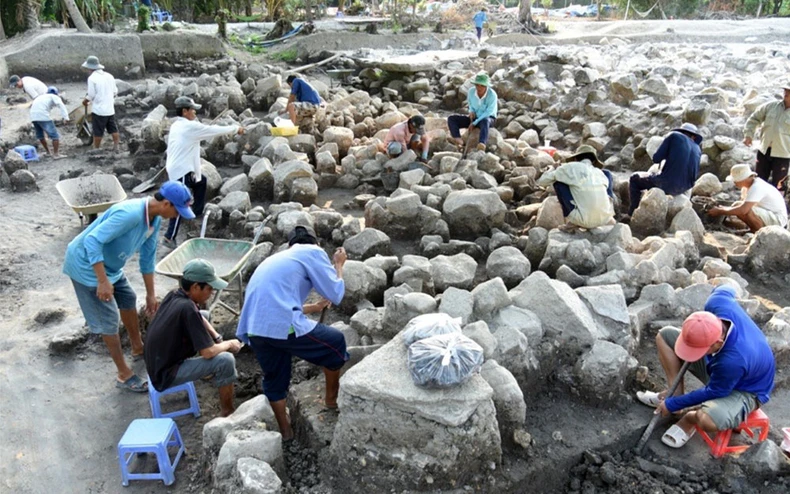
In 2015, the Prime Minister assigned the Vietnam Academy of Social Sciences to implement the Project "Research on the Oc Eo-Ba The archaeological site and Nen Chua (Southern Oc Eo Culture)". The objective of the project is to excavate and conduct archaeological research on the Oc Eo-Ba The (An Giang) and Nen Chua (Kien Giang) relic sites, providing a scientific basis for planning, conservation and construction of a dossier to nominate UNESCO to recognize the Oc Eo-Ba The archaeological site as a world cultural heritage.
Participating in the project are three leading archaeological units including the Institute of Archaeology, the Institute of Imperial Citadel Studies and the Southern Institute of Social Sciences.
From 2017 to 2020, the excavation project covered an area of 16,000 square meters in two areas of Oc Eo field and Ba The mountain slope, with 8 locations: Go Giong Cat, Go Giong Trom, Go Oc Eo, Lung Lon (Oc Eo field), Go Sau Thuan, Go Ut Tranh, Linh Son pagoda, Linh Son Bac (Ba The mountain), implemented by the Institute of Archaeology and the Southern Institute of Social Sciences.
From 2018-2020, the Imperial Citadel Research Institute excavated the Temple Foundation relic site with an area of 8,000 square meters, about 12 kilometers north of Oc Eo-Ba The as the crow flies.
Religious vestiges
Traces of different religions have been discovered by scientists at Oc Eo-Ba The, Nen Chua. At the foot of Ba The mountain, archaeologists found traces of a large, solid religious architectural complex including a system of surrounding walls, temples, gates, ceremonial paths, sacred wells, etc. serving religious ritual activities. It is estimated that this architectural complex dates from the 1st to the 12th century, with the core area being Linh Son and Go Sau Thuan areas.
Associate Professor, Dr. Dang Van Thang (University of Social Sciences and Humanities, Ho Chi Minh City National University):
The excavation results at Oc Eo-Ba The and Nen Chua have many new discoveries about relics and artifacts. The studies of Louis Malleret and some later scholars all considered Oc Eo as an urban or port city with the role of a bustling commercial center of the kingdom of Phu Nam, but did not place this urban area in the spiritual cultural space or religious cultural space in Oc Eo or Ba The. The excavation results of this project show that Oc Eo, in addition to being a cultural and economic center, also had a religious center that was formed and operated in parallel with the Ba The religious center, and Nen Chua was an important sea gateway of the ancient urban area of Oc Eo...
Specifically, traces of the foundation of the surrounding wall and a brick-built lake were discovered south of Linh Son Pagoda. The architectural complex of the gate and the ceremonial path was found at the Go Sau Thuan relic. At Go Ut Tranh, archaeologists found a complex of three Hindu temple structures. In addition, at Linh Son Bac, a number of unique artifacts were also discovered, such as stone stele engraved with ancient Sanskrit and Khmer characters, especially the stone slab carved with the image of Buddha meditating, which was recently recognized as a National Treasure in December 2021.
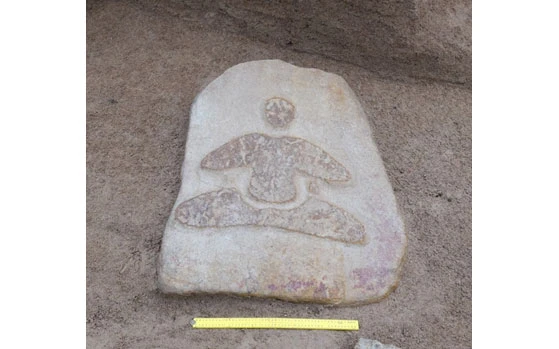
Linh Son Pagoda on Ba The Mountain currently also preserves many valuable artifacts of Oc Eo culture such as the statue of Vishnu, two stone steles...
These discoveries show that Ba The was a large religious center, around the 6th-7th century, serving the religious activities of the Oc Eo urban area, and there was a harmonious fusion between Hinduism and Buddhism.
At Oc Eo, archaeologists also found traces of a temple next to the remains of a stilt house and a wooden structure with buried pillars.
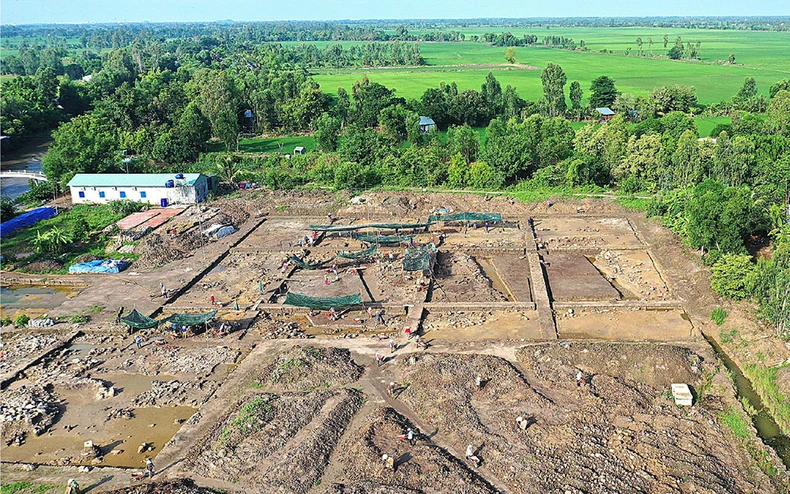
At the Nen Chua relic site (Hon Dat district, An Giang, about 12 km south of Ba The mountain and Oc Eo field as the crow flies), traces of temples were also found, although severely damaged. According to Louis Marallet's notes in 1946, along with the discovery of a stone linga dating from the 5th century on the southwest side of the mound in 1982, the discovery of the body of the goddess Durga and the hand of the god Surya, scientists believe that the architectural traces on Nen Chua Mound are Hindu temple architecture.
These discoveries show that both Oc Eo-Ba The and Nen Chua were prosperous residential and religious centers, in Ba The around the 6th-7th century, in Nen Chua around the 4th-6th century. Nen Chua at that time also had close relationships with the ancient urban area of Oc Eo, the religious center of Ba The and the surrounding area.
Traces of ancient urban and port areas
If in Ba The there are traces of a prosperous religious center, in Nen Chua there are traces of an urban area, a residential area and a religious center, then in Oc Eo there are traces of a prosperous residential area, a large-scale production area, a bustling trading area and even traces of an ancient port that once traded with many regions in the world.
In Oc Eo, on an area of 5,816 m2 in Go Oc Eo, Go Giong Trom, Go Giong Cat and Lung Lon, scientists discovered many traces of residents' residences such as traces of stilt houses, wooden architecture with pillars, round and square brick wells dating back to the 5th-7th century, boat oars with wide, pointed leaves similar to those of ancient residents of India or Southeast Asia. Especially the Lung Lon relic, an ancient canal that has been filled in many sections, runs across the central area of Oc Eo and all the way to the Nen Chua relic.
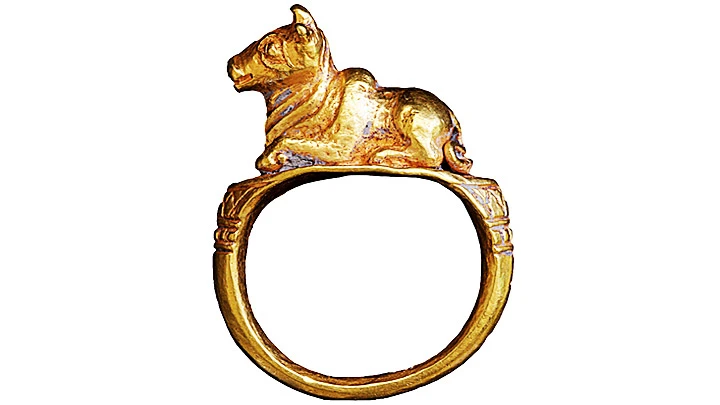
The results of the excavation at Lung Lon in 2019 showed that there used to be large-scale handicraft workshops here. Archaeologists found about 218 thousand multi-colored glass beads, collections of fishhooks, sewing needles, goldsmith hammers, earrings, badges, rings, bells and Ngu Thu coins. Notably, at the Go Giong Cat relic, a gold Nandin ring dating back to the 5th century was found, recognized as a National Treasure in 2021.
Oc Eo-Ba The Excavation Project, Temple Foundation:
Excavation area:
- Oc Eo-Ba The: 16,000 m2
- Temple Ground: 8,000 m2
Total number of relics:
Two national treasures recognized in 2021:
- Gold Nandin bull ring dating to the 5th century.
- Stone slab carved with image of Buddha meditating.
The special feature of many handicraft products here is that there are designs that have been made in foreign styles, for example, oil lamps in Roman and Mediterranean styles (2nd-4th centuries) have been discovered, ancient vases made from Oc Eo materials but in the shape of Indian vases. Many foreign relics have also been found here, such as money, jewelry and Roman gold medals, Persian bronze lamps, Han bronze mirrors, West Asian bronze mirrors, Five Autumn coins (China)... proving that there was trade with foreign countries very early, not only in Southeast Asia and China but also in West Asia, the Mediterranean, Korea and Japan.
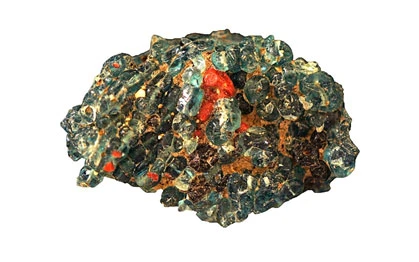
Lung Lon ancient canal is identified by scientists as a very important waterway of the ancient town of Oc Eo. On this canal, mainly small boats were used to transport goods from the ancient town of Oc Eo to the seaport where large ships anchored. Scientists determined that trading activities here were most active between the middle of the 2nd century and the end of the 6th century.
In addition, archaeological discoveries of Oc Eo glass beads or gemstones have been found in consumer countries such as Thailand, Malaysia, China, Korea, etc., showing that Oc Eo's sophisticated handicrafts are very popular in foreign markets.
Archaeological findings also show that Nen Chua was a thriving major residential and religious center from the 4th to the 6th century, where many cultural and religious activities of the community took place and possibly involved foreign traders. This was the gateway connecting the ancient town of Oc Eo with the outside world through the sea trade route.

Archaeological evidence over the years has opened the door for today to access the brilliant quintessence of the ancient kingdom of Phu Nam, in which Oc Eo-Ba The and Nen Chua clearly show that they were urban centers, religious centers, trading centers, ancient ports with a high level of development, influence and spread in the region. These archaeological results also show that this special National Monument meets all the criteria of UNESCO, enough to make a dossier to propose inclusion in the list of World Cultural Heritage.
Associate Professor, Dr. Tong Trung Tin, former Director of the Institute of Archaeology, Chairman of the Vietnam Archaeological Association:
This excavation project has discovered a thick cultural layer, dating continuously from BC to the 10th-11th century. This is a dream layer of Vietnamese and foreign archaeology for Oc Eo culture from the 90s and before.
A rich system of relics spanning the above cultural and historical periods has been discovered.
A rich system of relics with many different types of materials and designs has been discovered. Researchers from the three institutes have approached modern technological solutions and conducted comparative research, helping to identify many issues regarding relics and relics.
Source: https://nhandan.vn/di-tim-do-thi-cang-thi-co-trong-long-dat-post691488.html







![[Photo] Cat Ba - Green island paradise](/_next/image?url=https%3A%2F%2Fvphoto.vietnam.vn%2Fthumb%2F1200x675%2Fvietnam%2Fresource%2FIMAGE%2F2025%2F12%2F04%2F1764821844074_ndo_br_1-dcbthienduongxanh638-jpg.webp&w=3840&q=75)


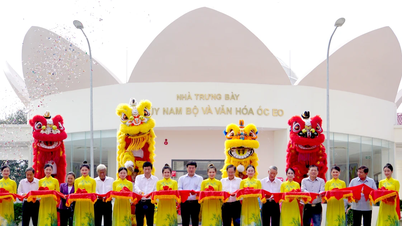





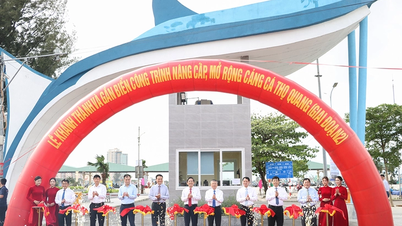












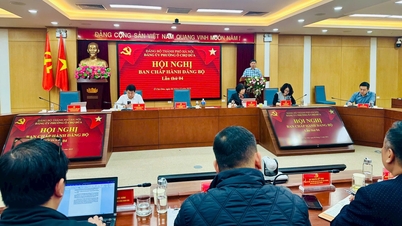

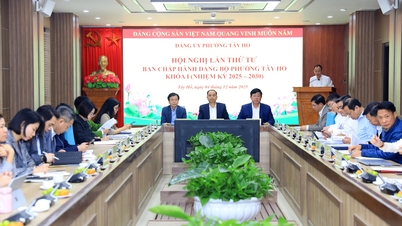

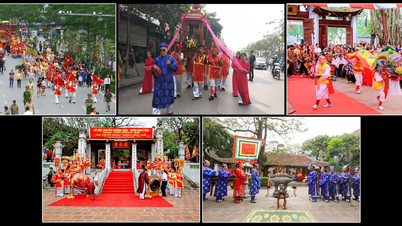

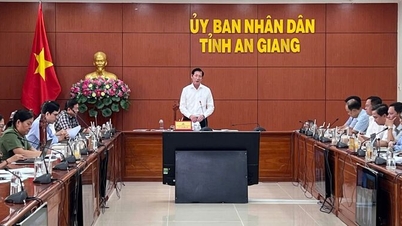

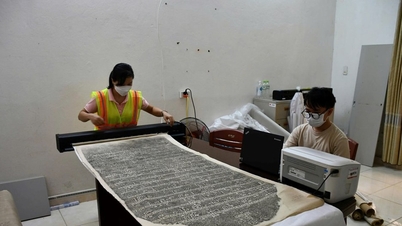

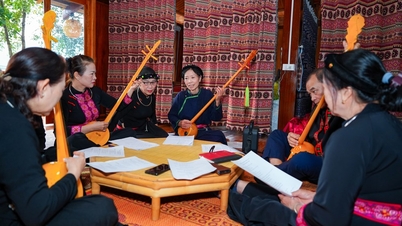



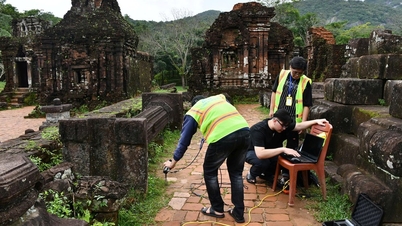



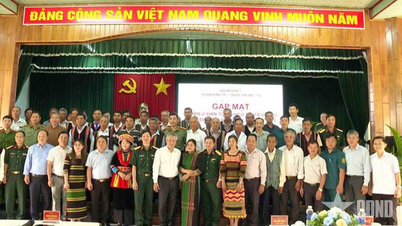



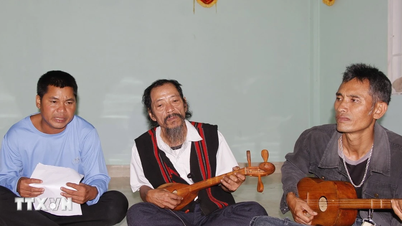
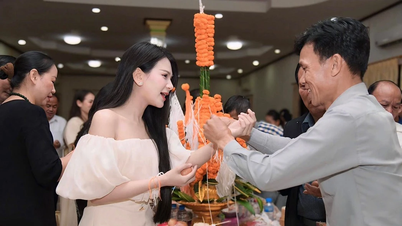


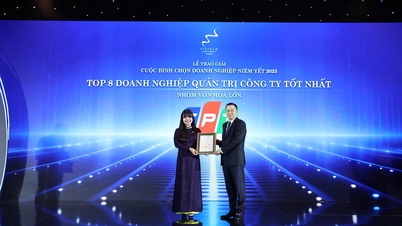



![[VIMC 40 days of lightning speed] Da Nang Port: Unity - Lightning speed - Breakthrough to the finish line](https://vphoto.vietnam.vn/thumb/402x226/vietnam/resource/IMAGE/2025/12/04/1764833540882_cdn_4-12-25.jpeg)

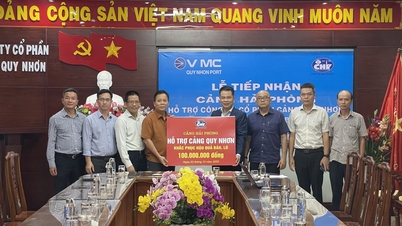












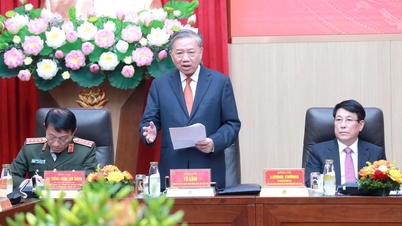

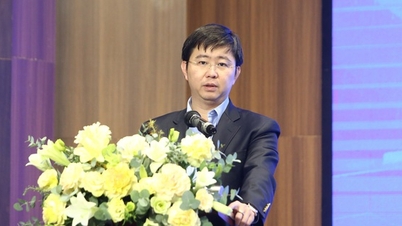







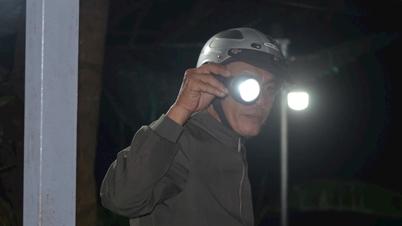

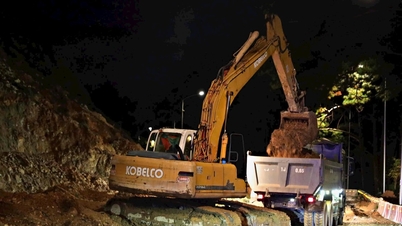
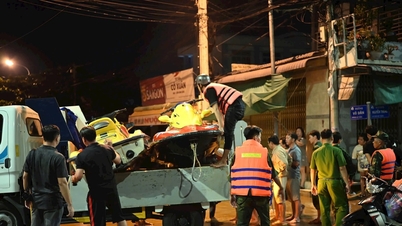



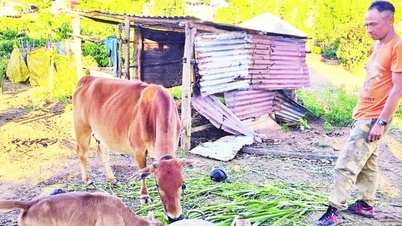












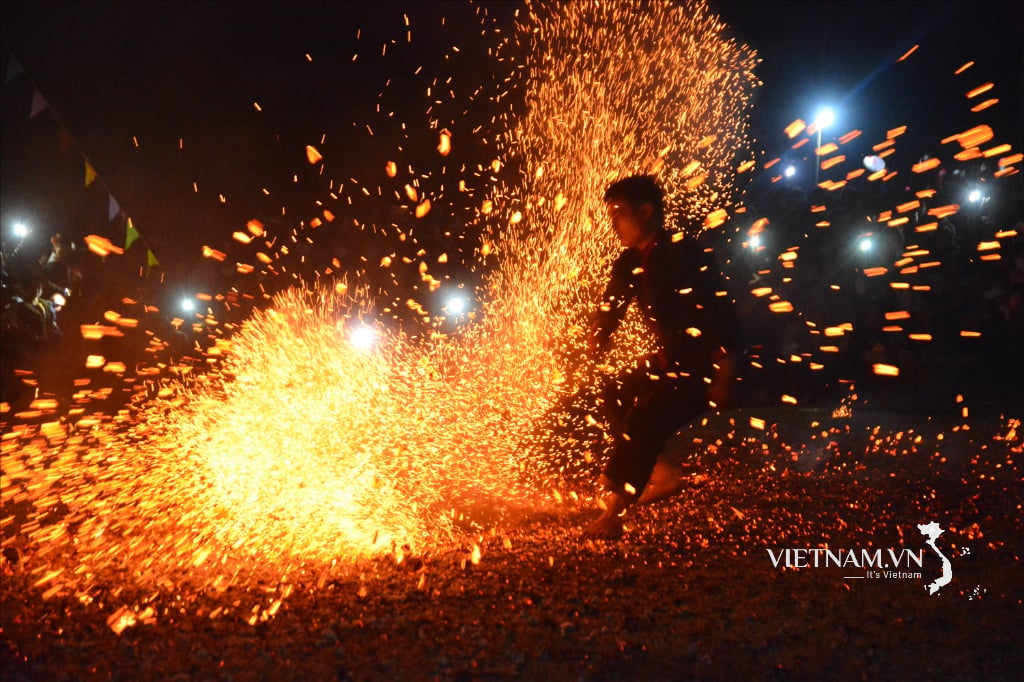
Comment (0)